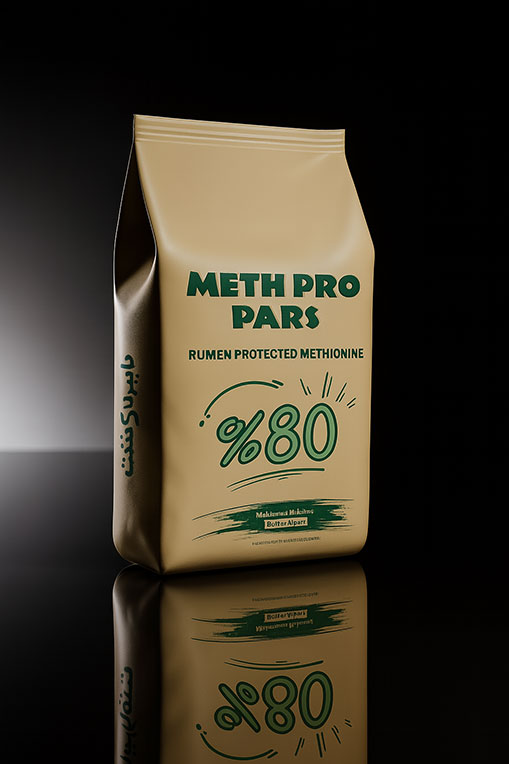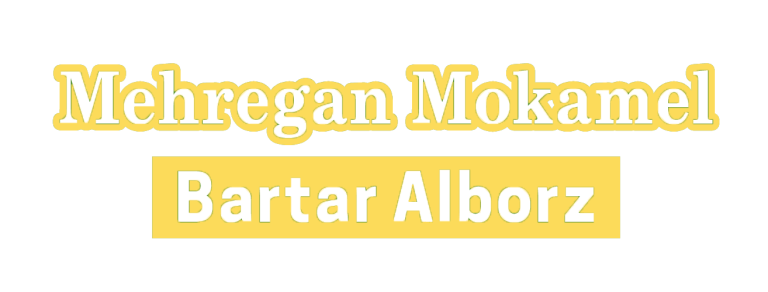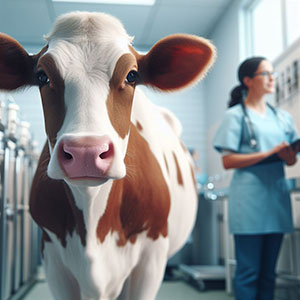RUMEN PROTECTED METHIONINE
Introduction
As global dairy production evolves toward higher efficiency, precision nutrition has become central to optimizing milk yield, metabolic health, and reproductive performance. Among all essential amino acids involved in dairy cow metabolism, methionine stands out as one of the most critical and most limiting. Its role spans protein synthesis, methylation cycles, antioxidant pathways, fat metabolism, and immune regulation. However, because free methionine is extensively degraded by rumen microbes, supplementing this amino acid in its unprotected form does not deliver sufficient concentration to the small intestine.
This is where rumen protected methionine (RPM) plays a transformative role, enabling nutritionists to bypass ruminal degradation and provide methionine efficiently to the metabolically active tissues.
Among emerging products, Methpropars—a next-generation rumen protected methionine—has gained attention due to its cellulose–polymer composite coating that provides rumen stability without depending on ruminal pH. This is a major advantage over pH-sensitive technologies that often fail under conditions such as SARA, high-concentrate diets, or forage variability.
What Is Rumen Protected Methionine?
Rumen protected methionine refers to technologies that prevent methionine degradation in the rumen and ensure that a significant portion reaches the small intestine. Such products are used in dairy nutrition programs to achieve optimal methionine-to-lysine ratios within the metabolizable protein, improving efficiency and production.
The Challenge of Rumen Degradation
Approximately 80–95% of free methionine disappears in the rumen due to rapid microbial breakdown. As a result:
- methionine rarely reaches the intestine in effective quantities
- milk protein synthesis becomes limited
- liver health may deteriorate during transition
- immune and reproductive function can be compromised
Thus, protecting methionine is necessary to unlock its full physiological benefits.
Types of RUMEN PROTECTED METHIONINE Technologies
Different commercial approaches exist:
- lipid-protected methionine
- fat–carbohydrate matrix systems
- polymer-coated methionine
- spray-dried encapsulated forms
- cellulose-based matrices
- composite polymer–cellulose systems (as used in Methpropars)
Each method aims to withstand ruminal degradation while ensuring digestibility in the intestine.
Methpropars: A New-Generation Rumen Protected Methionine
Methpropars represents an advanced RPM product built on a cellulose–polymer composite coating specifically engineered for:
- rumen bypass
- physical stability
- non–pH dependent protection
- controlled enzymatic release in the intestine
Unlike pH-sensitive systems (which rely on acidity differences), Methpropars offers reliable performance across all diet types and rumen conditions.
Importance of Methionine in Dairy Cow Nutrition
- Milk Protein Synthesis
Methionine is an essential precursor for:
- casein production
- milk protein concentration
- efficient nitrogen utilization
Balanced methionine significantly improves:
- total milk yield
- protein yield
- economic return per liter
- Liver Function and Transition Cow Metabolism
Methionine is central to methylation pathways that support:
- VLDL synthesis
- fat export from liver
- prevention of fatty liver
- improved resilience to negative energy balance
During the transition period, methionine is a cornerstone supplement in well-designed nutrition programs.
- Immune System and Antioxidant Defense
Methionine is a precursor for glutathione, one of the cow’s most powerful antioxidants. Adequate methionine supports:
- reduced oxidative stress
- improved immune responses
- resilience during heat stress
- Reproductive Performance
Studies consistently show that methionine supports:
- embryo viability
- uterine environment quality
- conception rate
- placental development
Methionine is therefore not only a productivity enhancer but also a reproductive efficiency promoter.

Why Methpropars Stands Out Among RPM Products
- Cellulose–Polymer Composite Coating
Methpropars uses a protective matrix composed of:
- food-grade cellulose
- specialty polymers engineered for controlled digestibility
This combination results in:
- mechanical resistance in the rumen
- stable bypass regardless of pH
- predictable intestinal release
- Independence from Rumen pH
Traditional pH-sensitive RPM systems rely on acidity differences between the rumen and intestine. However:
- SARA (subacute ruminal acidosis)
- high-grain diets
- forage fluctuations
…can significantly affect rumen pH and reduce the efficacy of pH-triggered coatings.
Methpropars overcomes this challenge completely.
- High Digestibility in the Small Intestine
Enzymatic breakdown of the cellulose–polymer matrix ensures:
- gradual release
- high absorption
- optimal bioavailability
This controlled release enhances methionine delivery precisely where it is most needed.
- Physical Stability and Flowability
Methpropars pellets are:
- uniform
- stable during TMR mixing
- resistant to mechanical abrasion
- easy to store and handle
These properties ensure accurate dosing on dairy farms.
How Methpropars Functions Through the Digestive System
In the Rumen
Methpropars maintains integrity under:
- mechanical mixing
- microbial fermentation
- variable pH conditions
- diverse feeding programs
The cellulose–polymer coat is not designed to dissolve or break down in the rumen.
In the Small Intestine
Once Methpropars reaches the duodenum:
- digestive enzymes begin targeting the polymer–cellulose matrix
- methionine is progressively released
- absorption occurs via active and passive transport pathways
Metabolic Utilization
Absorbed methionine supports:
- protein synthesis
- methyl donor pathways (SAM production)
- antioxidant synthesis
- lipid metabolism
- immune processes
This results in measurable improvements in production and health.
Benefits of Using Rumen Protected Methionine like Methpropars
- Higher Milk Protein and Milk Yield
Consistent supply of methionine directly improves:
- casein synthesis
- protein percentage
- peak milk potential
- Reduced Metabolic Disorders in Transition Cows
Adequate methionine:
- lowers liver lipid accumulation
- enhances VLDL export
- reduces risk of ketosis
- improves overall transition quality
- Heat Stress Resilience
Methpropars improves:
- oxidative balance
- immune stability
- milk consistency during heat stress
- Fertility Improvement
Methionine:
- enhances oocyte health
- improves embryo viability
- reduces early embryonic loss
- Enhanced Nitrogen Efficiency
More amino acids reach the intestine → less protein waste → improved feed efficiency.
Recommended Feeding Rates for Methpropars
Feeding guidelines typically target:
- 8–20 g digestible methionine per cow per day
- exact rates determined using NASEM 2021 or CNCPS-based modelling
- consideration of lysine-to-methionine ratios for optimal MP balance
Methpropars can be included in:
- TMR
- pelleted blends
- top-dress supplements
- transition diets
Practical Applications of Methpropars Across Production Stages
- Transition Period
Benefits include:
- improved metabolic adaptation
- lower risk of ketosis
- better dry matter intake
- higher early milk production
- Early to Peak Lactation
Methpropars helps:
- maximize peak performance
- support amino acid balance
- improve component yield
- Mid and Late Lactation
Benefits include:
- better feed conversion
- sustained milk components
- enhanced reproductive performance
- Heat Stress Conditions
Methpropars supports:
- cellular repair
- immune modulation
- improved antioxidant status
Optimizing Dairy Cow Nutrition: The Role and Benefits of Rumen Protected Methionine
In modern dairy nutrition, ensuring that cows receive the proper balance of nutrients is crucial for maximizing milk production, improving reproductive performance, and maintaining overall health. Among these nutrients, amino acids play a vital role, with methionine emerging as one of the most critical. However, due to the unique digestive physiology of ruminants, supplementing methionine in a “protected” form is necessary to ensure its availability and efficacy.
The Essential Role of Methionine
Methionine is an essential amino acid, meaning that dairy cows cannot synthesize it internally and must obtain it through their diet. It is fundamental for several metabolic processes, including:
- Protein Synthesis: Methionine is a building block for milk proteins. Adequate methionine supports the synthesis of high-quality milk protein, which is crucial for both calf growth and dairy product quality.
- Methyl Donor Functions: Methionine serves as a precursor for S-adenosylmethionine (SAM), a compound involved in methylation reactions. These reactions are essential for DNA methylation, gene expression regulation, and overall metabolic function.
- Antioxidant Activity: It is involved in the synthesis of glutathione, one of the body’s primary antioxidants. This helps protect cells from oxidative stress, supporting the immune system and overall health.
Challenges in Ruminant Methionine Supply
Unlike monogastric animals, dairy cows have a complex stomach system. The rumen hosts a diverse microbial population that degrades many dietary amino acids before they can be absorbed in the small intestine. Unfortunately, free methionine is particularly vulnerable to this microbial breakdown. As a result, even if a cow’s diet appears to contain sufficient methionine, much of it can be lost in the rumen and not available for metabolic processes.
To overcome this challenge, nutritionists use rumen protected methionine (RPM). These specialized supplements are designed with coatings or encapsulation techniques that shield methionine from rumen degradation, allowing it to pass intact into the small intestine where it can be effectively absorbed.
Benefits of Supplementing Dairy Cows with Rumen Protected Methionine
- Enhanced Milk Production and Composition:
- Improved Milk Yield: Numerous studies have shown that supplementing with rumen protected methionine can lead to increased milk volume. The availability of methionine directly supports the synthesis of milk proteins, contributing to higher overall milk production.
- Increased Milk Protein Content: By ensuring an adequate supply of this limiting amino acid, dairy cows can synthesize a more balanced profile of milk proteins, enhancing both the nutritional value and the processing qualities of milk.
- Better Reproductive Performance:
Methionine’s role in methylation and overall metabolic health can positively influence reproductive efficiency. Improved nutrient status contributes to better estrous cyclicity, conception rates, and overall reproductive performance.
- Improved Immune Function and Health:
The antioxidant benefits of methionine, via its role in glutathione synthesis, help in mitigating oxidative stress. This contributes to enhanced immune responses and overall health, reducing the incidence of metabolic disorders and other health challenges in high-producing dairy cows.
- Optimized Feed Efficiency:
With a better amino acid profile, dairy cows are able to utilize their feed more effectively. This improved nutrient efficiency can lead to reduced feed costs and lower nitrogen excretion, benefiting both farm economics and environmental sustainability.
- Support During Critical Periods:
The transition period—from late gestation to early lactation—is one of the most challenging times for dairy cows. Supplementing with protected methionine during this period can help support energy balance, reduce metabolic stress, and enhance the recovery and productivity of cows after calving.
| slow release urea for ruminant |
How Rumen Protected Methionine Works
The technology behind rumen protected methionine involves encapsulation or coating methods that prevent the amino acid from being degraded by rumen microbes. Once the supplement reaches the acidic environment of the abomasum and the enzymatic conditions of the small intestine, the protective layer dissolves, releasing methionine for absorption. This targeted delivery ensures that a higher proportion of the ingested methionine is available for metabolic functions, rather than being wasted in the rumen.
Economic and Environmental Considerations
Beyond the direct health and productivity benefits, the use of rumen protected methionine has broader economic and environmental implications:
- Economic Efficiency: Improved milk yield and composition translate directly into higher revenue for dairy producers. Optimized nutrient utilization can also lead to lower feed costs over time.
- Environmental Impact: By enhancing feed efficiency and reducing excess nitrogen excretion, rumen protected methionine contributes to more sustainable dairy farming practices. Lower nitrogen waste helps reduce the environmental footprint of dairy operations.
Conclusion
Rumen protected methionine is a cornerstone of precision dairy nutrition. Its effectiveness depends heavily on the protective technology used. Methpropars, with its advanced cellulose–polymer composite coating, stands out by offering reliable rumen bypass and predictable intestinal digestibility without relying on ruminal pH triggers. This feature makes Methpropars one of the most dependable and advanced rumen protected methionine options available today.
By supporting milk yield, component optimization, liver health, reproductive efficiency, and immune resilience, Methpropars provides a comprehensive solution for dairy farms striving for higher profitability and consistency. Whether used during transition, peak lactation, or under heat stress, Methpropars ensures that cows receive the methionine they need to perform at their best.
Frequently Asked Questions (FAQ)
What makes Methpropars different from other rumen protected methionine products?
Its cellulose–polymer composite coating provides protection independent of rumen pH.
Does rumen pH affect Methpropars performance?
No. Methpropars is designed to remain stable regardless of acidotic or alkalotic rumen conditions.
How does Methpropars release methionine in the intestine?
Through enzymatic digestion of its composite coating.
Can Methpropars be used in transition cow diets?
Yes—Methpropars is highly recommended for supporting metabolic health during transition.
How often is rumen protected methionine required?
Daily supplementation is essential for maintaining amino acid balance in high-producing cows.
Can Methpropars improve fertility?
Yes—methionine improves embryo quality, uterine health, and conception rates.
Does Methpropars interact negatively with other supplements?
No. It is compatible with minerals, vitamins, buffers, probiotics, and feed additives


